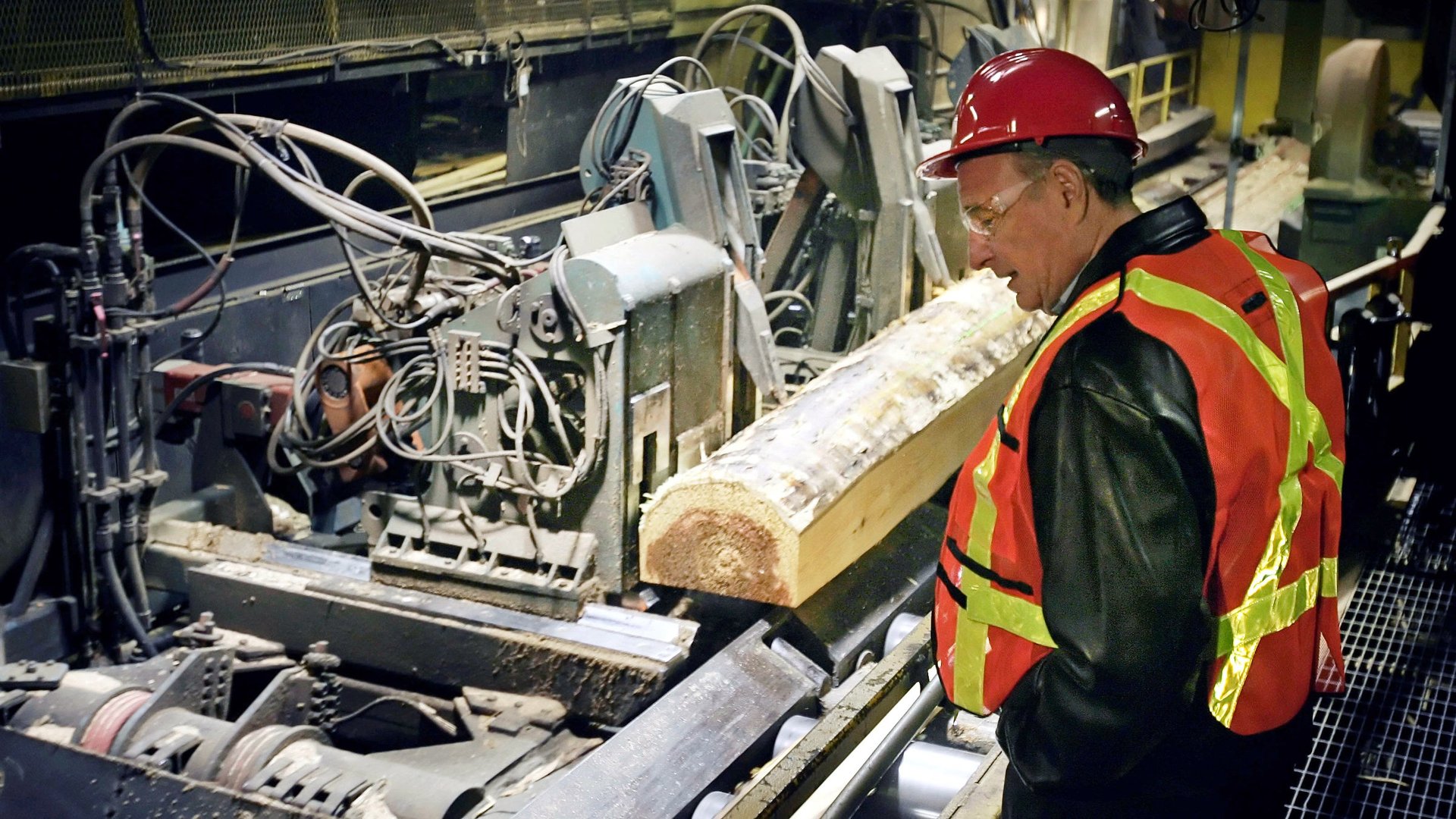Donald Trump’s war on Canadian lumber socialism is business as usual for US presidents
The Trump administration took its first truly protectionist step yesterday, but its target wasn’t China or Mexico.


The Trump administration took its first truly protectionist step yesterday, but its target wasn’t China or Mexico.
Instead, the US Commerce Department issued a preliminary finding that Canadian lumber imports receive unfair government subsidies, and ordered customs officers to begin collecting border tariffs averaging 20% on softwood coming over the border. Last year, the US imported more than $5 billion worth of lumber like this, much of it for homebuilding.
“This is not our idea of a properly functioning Free Trade Agreement,” commerce secretary Wilbur Ross warned in a statement.
Except that the lumber trade hasn’t been part of the North American Free-Trade Agreement (Nafta). It also wasn’t part of the discussions around that the now-scotched Trans-Pacific Partnership (TPP) that would have superseded and expanded the original three-nation trade deal. Indeed, the dispute pre-dates Nafta and reflects a long-standing international tiff that cuts across the traditional political divides on border issues.
The lumber debate between the US and Canada began in 1982. It is driven by fundamental factors: In the US, much timber land is privately owned and competitively priced. In contrast, Canada’s vast timber reserves are mostly owned by the government and leased over the long term to producers. That complicates pricing comparisons, and the nature of forestry—with different sizes, varieties and species of tree being harvested—complicates them further.
US lumber firms argue that the government leases and other forestry rules amount to a subsidy to Canadian lumber exporters, making it harder for US lumber firms to compete. Canadian firms, naturally, say their pricing is fair. US presidents from both parties have regularly imposed these duties on Canada, in between negotiating short-term agreements designed to fix the issue.
The recent expiration of one of these agreements, inked in 2006, is the proximate cause of Trump’s announcement of new tariffs. After a request from US lumber producers last October, the Commerce Department concluded that Canada wasn’t playing fair and imposed the new duties. Canada could challenge them at the World Trade Organization, or come to the negotiating table.
One lawmaker applauding the new duties was Democratic senator Ron Wyden. He represents Oregon, a state with a large timber business, but he was also a backer of the TPP, as his constituents also include employees of global shoe powerhouse Nike. He was a key player in a 2015 deal that beefed up trade protections like these countervailing duties in exchange for speeding consideration of the TPP.
Critics of the move note that the costs of the new tariff will largely fall on Americans buying new homes or doing lumber-intensive renovations. While US lumber producers have a strong voice in the policymaking process, US lumber consumers remain a diffuse group (though homebuilders protested the new tariff.)
With the scrutiny accompanying Trump’s first 100 days in office and a separate war of words with Canada over dairy trade, the strike at softwood has gotten more attention than most trade remedies—much to the delight of the anti-globalization faction in the White House. It’s clear the administration wants to use the timber issue to lay the groundwork for a mooted Nafta overhaul, but those following the issue closely say Nafta rules largely don’t affect the lumber dispute, which is primarily bilateral.
There is a Trump twist upcoming: To cement the preliminary tariffs, the US International Trade Commission must certify its finding of harm from Canadian policies by the end of the summer. To do that, Trump will need to appoint another Democrat to the commission, whose members must be evenly divided between political parties. With numerous vital posts still unfilled, its a real question if Trump will be able to put a commissioner in place in time.